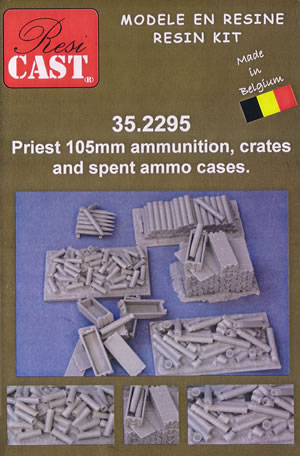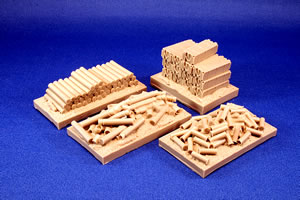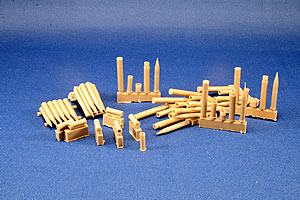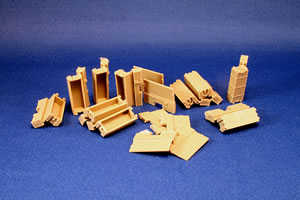|
Priest
105mm Ammunition, Crates and Spent Ammo Cases |
 |

Resicast The second book I purchased when I got back into modeling in 1990 was The Verlinden Way, Volume II. And that book developed in me a special appreciation for settings with artillery as the main focus. Along with Verlinden's nice vignettes surrounding Italeri's 105mm howitzer and Tamiya's white metal 75mm pack howitzer, there were also a nebelwerfer, 25pdr field gun, and M30 mortar—as well as Shep Paine's classic '88 in the church rubble. Also featured were an Easy Eight and 105mm Sherman built by R. De Craeker. These latter two scenes had dozens of spent cases and empty ammo tubes and boxes scattered around. I was impressed by these dioramas on two levels: there was this impressive evidence of the act of the waging war, and these scenic elements were crafted by hand, before the rise of the aftermarket industry we enjoy today. And these dioramas undoubtedly fueled my creative approach to Mail Call for the Sons of Thor. So I was delighted when I heard Resicast was producing a set of 105mm ordnance, as I've got a couple Italeri howitzers and Priests in my stash, as well as the Tamiya 105mm Sherman and the more recent Academy Priest. Unfortunately, the set falls short, literally and figuratively.
The remaining pieces can be used to dress the firing area or give a more personalized look to the large pieces:
The Resicast fiberboard tubes (and rounds), as also shorter than their real life counterparts. The the tibes are attached to the carriers at one end, eliminating the detailing on the this end cap; the other end cap has simplified detailing that does not give depth to the indented radius, at least on the WWII era tubes I've seen. The open ends of the empty tubes are hollow and appropriately thinned—unlike those from Tiger Model Designs, which have the correct cap detailing but you must manually drill out the opened tubes. It's a compromise of the casting process, the third option being to run the carrier along the length of the tube, but the modeler risks scraping the tube out of round while removing the carrier. The pieces are all well-cast without any flaws or excessive flash. The four large pieces are cast atop ground surfaces formed over a base about 1/8" thick. Given that most groundwork has some depth of a base of Celluclay or similar material, it's merely a matter of evening off the bottom of the resin piece and setting it into your ground material and blend it in with the modeled surface. I know from experience what a pain it is to amass and assemble piles of discarded ordnance, so these large castings will be a real time-saver. If you're a stickler for accuracy, you might be challenged trying to add the colored tape to the tubes that are molded together. The stripes for the separate tubes can be painted or wrapped with a suitably sized decal stripe that you might be able to find in the railroad section of your hobby store. As for the boxes, as if in answer to a prayer Archer Fine Transfers has simultaneously released a set of 105mm Ammo Crate Stencils for the Resicast boxes. You'll need two of these to cover the 17 boxes in the Resicast, however. I've been waiting for nearly 20 years for this is the type of set. The downside, however, is that research strongly suggests it is the wrong style of box for this era. Thanks to Graham Sellar at Resicast for this review sample. -tss |
 |
 |
 |
 |
 |
 |
 |
 |
 |
 |
 |
 |
|




